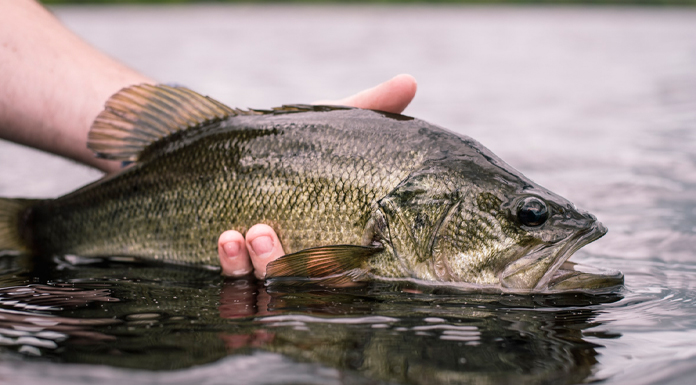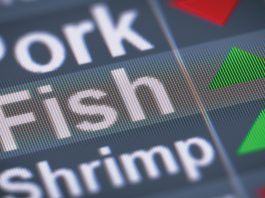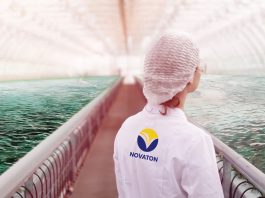U.S. Aquaculture Society speaks to The Innovation Platform about why the US aquaculture industry is growing in several areas and adjusting in others.
Aquaculture: the farming of freshwater and marine aquatic plants and animals, is the fastest growing sector of agriculture worldwide. TIP speaks to Angela Caporelli, the president of the U.S. Aquaculture Society (USAS) about aquaculture in America.
To begin, what is the current state of aquaculture in the US?
Over the last 60 years, aquaculture in the US has seen many changes. Years ago, the largest US commercial aquaculture was predominantly catfish production and was very successful. This was practiced in the central US delta states for the food industry. This success went on for many years, and had been very successful and profitable for many farmers. In the early 2000’s, the industry was faced with a significant increase of similar products being imported from China that called their product “catfish” although, it was a very different species. These imports were coming into the US for a very low price and the market shifted to accommodate a lower priced product. These imports of “Basa” or “Swai” from Asia caused significant financial loss within the US catfish industry. This was compounded by the rising cost of fish feed ingredients such as corn, soy and fishmeal and oil during that same time.
This led several farmers to cut down on production or shift fishponds to row crops for a higher profit margin. This situation demanded shifts from all parties involved: the farmers were forced to make tough economic decisions, researchers were tasked to find feed alternatives and production methods that produced fish that are hardier, faster growing or disease resistant, and marketing groups were asked to research the niche and long-term opportunities for US aquaculture. The US responded with significant support through research funds and together, as a result, there has been dramatic advancements in these areas of feed and nutrition, production and spawning techniques, genetics and marketing. This has led to several areas of growth and expansion into the many aspects of aquaculture, which is valued at over $1.45bn (~€1.31bn) today. However, there are still several secondary and tertiary issues hindering the further growth of the aquaculture industry in the US.
What are some of the current aquaculture issues, and how can these be overcome?
Being a relatively “new comer” to livestock production in US agriculture, full and in-depth understanding of all the many factors within the industry are still being discovered. One well established sector of agriculture, that lacks full understanding of the aquaculture industry, is the financial and investment groups. Bankers willing to invest in new ventures in agriculture such as aquaculture, do not have the 100 years of experience that cattle and poultry have, and are reluctant to invest. This has led to a very uneven marketing platform where the competition in the market is from imports from other countries. The US investment strategy is lagging compared to these importing countries where their governments not only invests in aquaculture production, but financially support farmers and support industries to develop infrastructure and bolster production and sales. If the US was to better invest, not only in research, but also significantly invest in aquatic farming, the US could compete globally with some of the highest quality and safest aquatic products produced in the world.
While lack of significant investment is a concern, imposed costs can also make expansion difficult for new aquatic farmers. Farmers in the US have several regulatory agencies that oversee aquaculture and seafood production. From one angle, these regulations ensure safe and sustainable product production, with no environmental degradation or health risk for the consumer. On the other hand, several imposed regulations for aquatic production can be difficult to achieve, without significant time and financial burden for a small farmer. Transportation of live fish from state to state can hinder market access, due to states’ requiring costly transportation permits from every state the live product might be trucked through. Some states require disease testing of every load of fish, equating to a significant cost of time and money. Many of the same disease, that could affect fish, are found routinely in nature and may only pose a risk to the animals in high stress or poor management situations. This testing also is a significant cost to the farmer. If disease is diagnosed, the US fish farmers have only a few approved treatments allowed in the aquaculture industry. Of which all of the treatments are veterinarian mandated and prescribed. However, this is not the case in all countries, where there may be no regulations or restrictions and no oversite or rules for treatments used by some other countries that are exporting fish into the US and others countries as well. This fact also puts the US fish farmers at a disadvantage with international production and imports. An example is: Think two fish farms with the same species and production area: There is an outbreak of a disease, the non-US farmer treat the fish with something that is not allowed here in the US and 90% of their fish survive. Whereas in the US, the farmer would not be able to use the same treatment, therefore lose 50-60% or more of his fish and still be competing within the same market where the price structure for his fish need to compensate for his loss to break even. Hence, a very uneven marketing field. In this scenario, it is quite possibly some fish entering the US market may have been treated with a chemical or drug that is prohibited in the US.
Can you tell us about some of the latest developments in aquaculture research?
Research within aquaculture has recently been extensive and diverse. Feed, the largest expense in raising fish, and nutrition is a large area of research, along with production methods, breeding and disease diagnosis and treatments. In the US, we have some of the most efficient complete diets with great feed conversion ratios (FCR). These have been achieved by including soybean, corn and other meals to replace some of the most expensive ingredients. Keep in mind, fish culture production systems must supply a complete diet as the animals are not subjected to fields and pasture for supplemental feeding, like terrestrial animal production.
Moreover, breeding is an area where extensive research is being conducted in order to achieve the best growth and feed efficiency and conversion, without effecting quality and texture. Marketing of the fish products is also studied and more research needs have been identified due to consumer trends constantly changing.
These trends need to be identified and established and then production and marketing needs to be adjusted in order to meet those trends. Whether it is size, type, disposition or even the name of the product, we need to know how to better meet the market demand. In addition to marketing for the consumers, there has been recent research conducted in relation to farm production and regulation costs. The US aquaculture industry has oversight by approximately 17 different state and federal agencies, each with their own sets of rules and regulations. These regulations, not always communicated to each other within these different agencies, often creates a very expensive and frustrating arena to work within. US farmers and industry are trying to get those agencies together to work on streamlining regulations and oversite. There have been great strides made in this area.
What is the work and role of US Aquaculture Society (USAS)?
The role of USAS is to educate and disseminate research findings to other researchers, farmers and industry, whilst also promoting the growth of the industry and identify areas that need research.
Unlike the cattle and poultry industries, which features straightforward production methods and regulations, aquaculture is a different story. The reason for the differences with the aquaculture industry is the aquaculture industry itself is not straightforward. For example, there are cold, temperate and tropical water species, fresh, salt and brackish water species, finfish, shellfish and crustaceans. There are also smooth scaled and rough scaled finfish that deal with water quality and treatments very differently. There are herbivores and carnivores, surface feeders and bottom feeders, all of which need different diets with different size pellets. These pellets differ whether floating or sinking, and with different ingredients depending on life cycle and production and spawning methods. Production systems can be raceway, ponds, and in-pond raceways, cages and floating net pens in lakes, rivers and oceans, bag, line and cage culture for shellfish. Those are just the basics of the bigger differences that dictate aquaculture production.
Within the aquaculture livestock area, we also have aquaponics, incorporating plants and fish that have different requirements that must mesh the fish and water composition demand of fresh or salt water and temperature requirements for both fish and plants. All of those concerns and details are just in the food fish sector of aquaculture. We also have a very successful baitfish industry, stocking fish industry and ornamental aquarium fish production, and even some growing medical use in the field of genetics. With all those issues and concerns, the US aquaculture industry is growing in several areas and adjusting in others.
The bottom line is: the US has some of the safest, most highly regulated and high quality food fish in the world. The US aquaculture industry is positioned and ready to grow in order to meet the growing population demand for safe and healthy fish, grown in a safe and sustainable manner.
Please note, this article will also appear in the first edition of our new quarterly publication.









